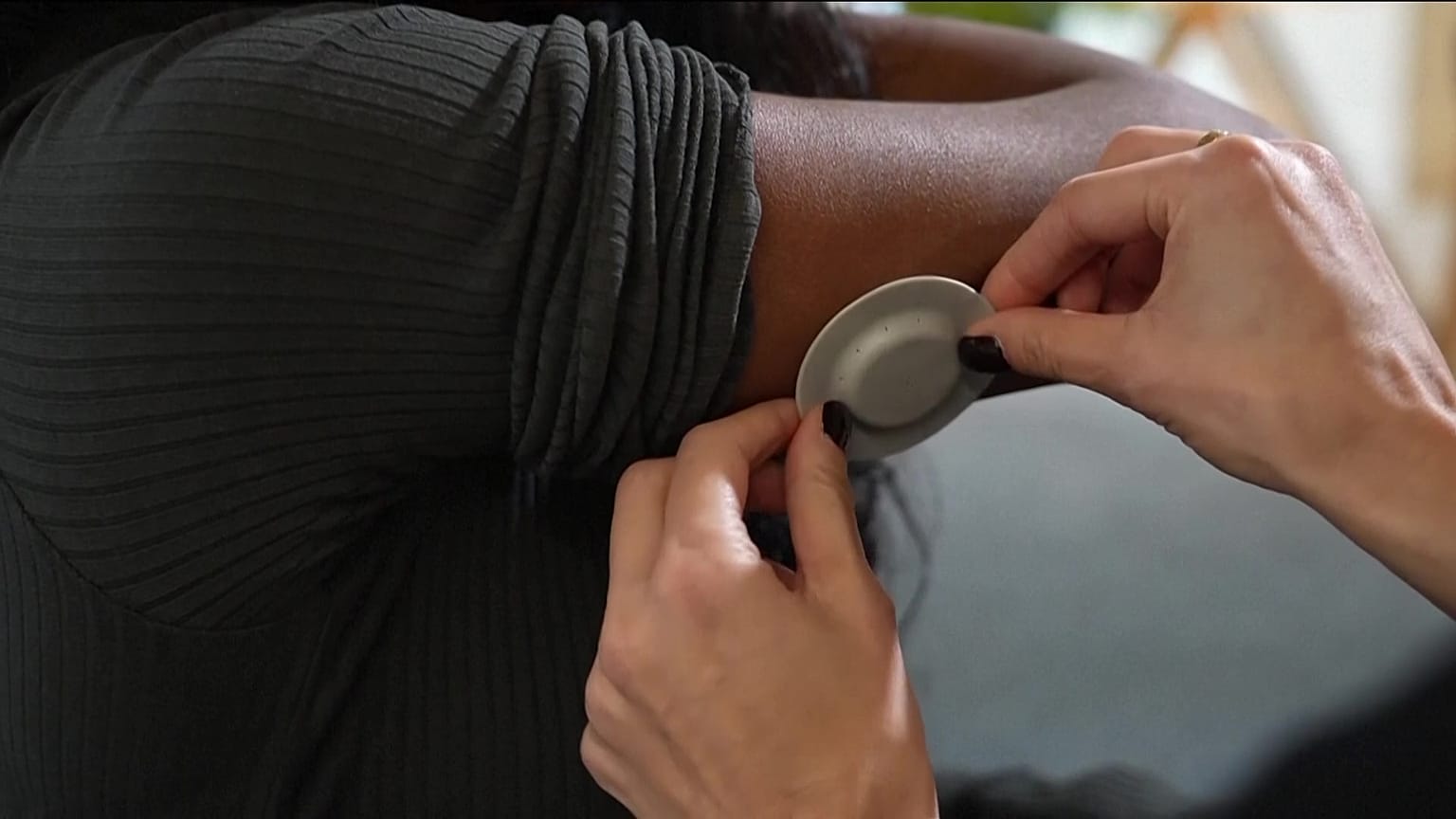This stick-on arm patch is among the new generation of glucose monitors.
UK resident Claire Reach doesn’t have diabetes but has been trialling various monitors for the past two years.
“Knowing that there is type 2 diabetes in my family, knowing that there's dementia in my family, I don't want to have either of those things long-term. So it’s what can I do now to improve my health now,” she said.
Flash monitors are gaining popularity among those without diabetes as a general health tool.
These monitors are designed to measure blood glucose, blood fat, gut microbiome composition, diet quality, and personal history.
They transmit blood glucose levels in real-time to smartphones, helping the users to track how the food they consume affects their bodies.
One such monitor, the ‘Lingo sensor’ which was launched in 2023, is a wearable device for non-diabetics.
Its developers, Abbott, the US pharmaceutical company behind the world’s most-used glucose monitor for diabetes, say Lingo can help people optimise their health in the same way that people invest in gyms, personal trainers and nutritionists
“The way it works is you have the biosensor on your arm. It transmits your glucose levels in real-time to your smartphone,” said Sarah Tan, General Manager for Europe at Lingo.
“You get small tips and insights as to how you can make small changes to your everyday and create long-lasting habits so that you can feel better have more energy, improved mood,” added Tan.
Zoe, another company selling blood glucose monitors in the UK, says it had 200,000 people on its waitlist in 2022 and currently there are more than 100,000 users.
The charity Diabetes UK says there are many benefits to the new range of sensors for patients with blood sugar disorders.
But they warn that these devices are not always as accurate as a finger prick check and it can take some people a while to get used to the technology.
Some physicians specialising in internal medicine are concerned that people will use the monitors without paying attention to other important markers of well-being.
“By overly focusing on one aspect of your metabolism, i.e. glucose. an individual might be neglecting the other aspects of their metabolism and health. For example, blood pressure, cholesterol levels or weight or there are so many other things that incorporate, you know how we feel about our health,” said Dr Shivani Misra, a specialist in metabolism, digestion and reproduction at Imperial College London.
Both Lingo and Zoe’s devices cost around €348 to set up and there can be monthly fees.
For more on this story, watch the video in the media player above.


















